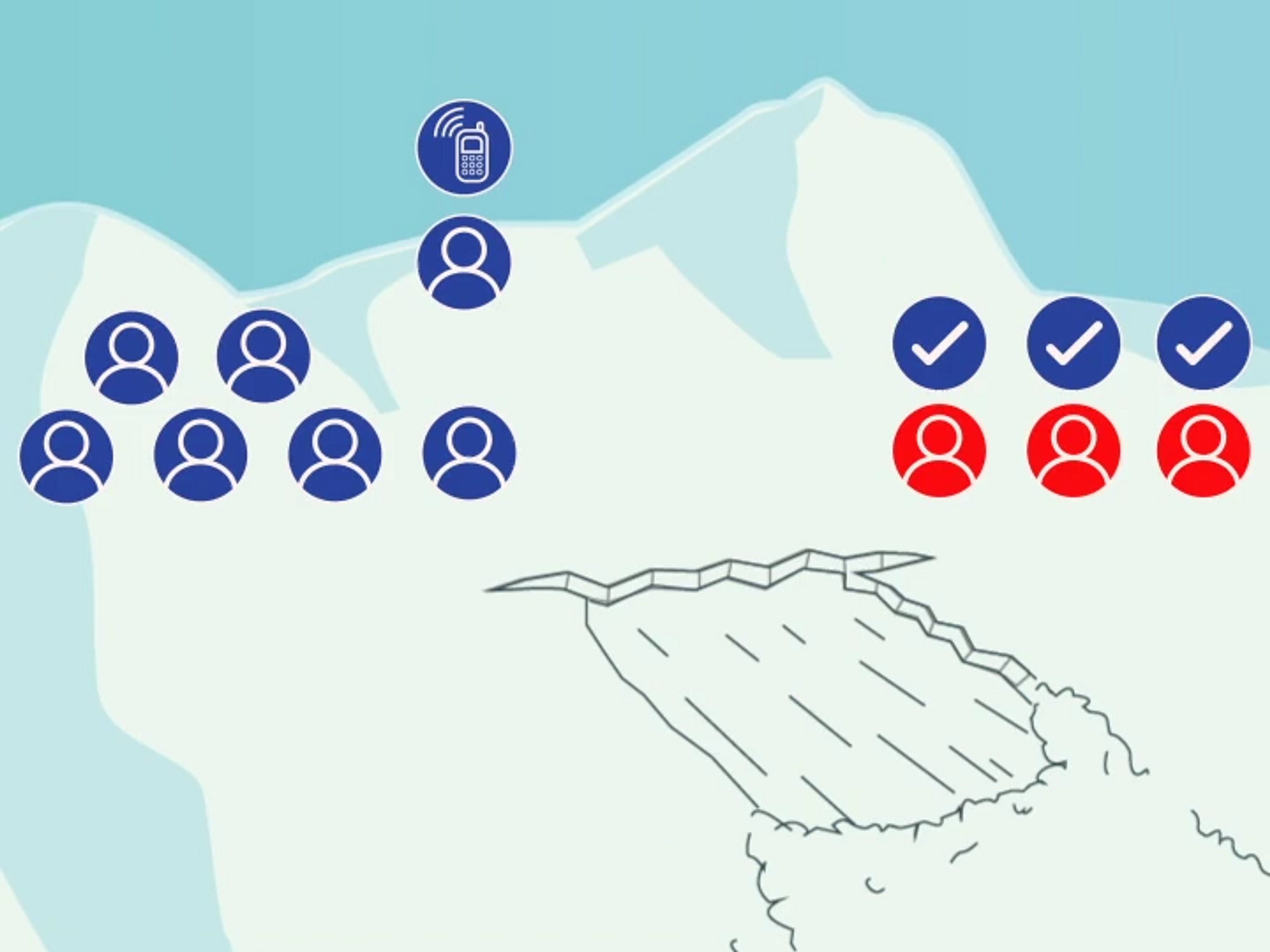When to Call for Help
Calling for help takes time. Remember, the critical response time is just 10 minutes. Every second counts. Unless you have extra rescuers available, you should only call for help after all victims have been recovered.
If there are extra rescuers available and you have a suitable communications device, designate one person to place an emergency call. This person should stay at least 25 m away from the transceiver searchers to prevent electronic interference.
What if there is another group nearby? Accepting help is almost always a good idea but make sure to manage this influx of new people. Sometimes it's not helpful to have too many people on the scene at once. And of course, always make sure all transceivers are in search mode.
Tap or hover over the icons to find out more.
 If you have a surplus of rescuers and a functional communications device, send one person to make a call. This person should be at least 25 metres away from the group before making the call in order to prevent electronic interference.
If you have a surplus of rescuers and a functional communications device, send one person to make a call. This person should be at least 25 metres away from the group before making the call in order to prevent electronic interference.